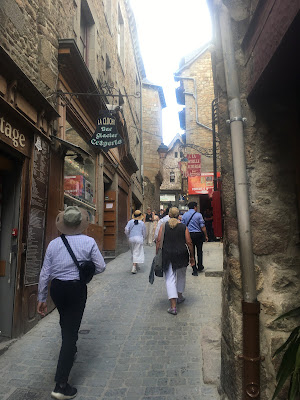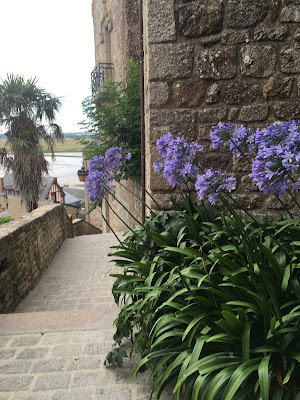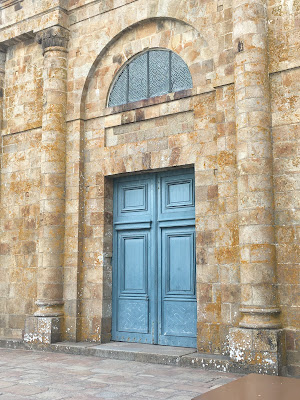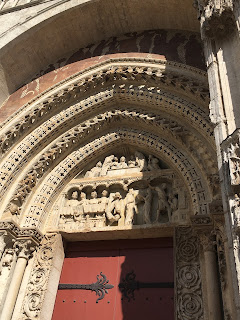Sunday, October 8, 2023
Celebrating 1,000 Years on Mont St. Michel
Sunday, August 20, 2023
Bayeux Is a Special Place in Normandy
Saturday, August 5, 2023
Respect and Gratitude at the Normandy Beaches
by Norma Hopcraft
The Pointe was full of people, all respectfully quiet and serious. Many young people were there with tour guides telling them about D-Day, and about all that was at stake that day. It was gratifying to see their serious interest in history. May we never have to repeat a day like that one.
The barbed wire has been there more than 80 years.
Tuesday, August 1, 2023
A Dream Come True -- to Be in France
By Norma Hopcraft
At long last, some photos from France, as I promised! After 15 hours of travel, my sister Chris and I took one day to adjust to jet lag in Maisons-Laffitte, where my friend Carol's house is, the one I'm housesitting in. After a nap, we walked into town and enjoyed the shops.
Then we took a train to meet our French friend Martine and her little Himalayan Mountain Dog, Tibou (which means morsel in French argot) in Rouen. From there we went around Normandy and Brittany in Martine's car.
We had a very good time!
Let's start in Rouen today, and then head to Normandy.
First, meet Martine, my landlady when I lived in Paris for a year. She's an actress, and this is a photo of her that she gave me 10 years ago:
Next, here's Tibou -- or rather, here's a Shih-Tzu, a type of Himalayan mountain dog, also known as a cat-dog (because they're so independent by nature). You'll see a picture of the real Tibou later in this series.
Now, let's go to Rouen, which has an elaborate, ornate cathedral that Monet spent a year on, striving to capture an impression of its appearance in all kinds of weather, every season, all times of the day. He made more than 30 paintings of this cathedral.
Here's one decorative column on one side of one doorway, surrounded by stone























































